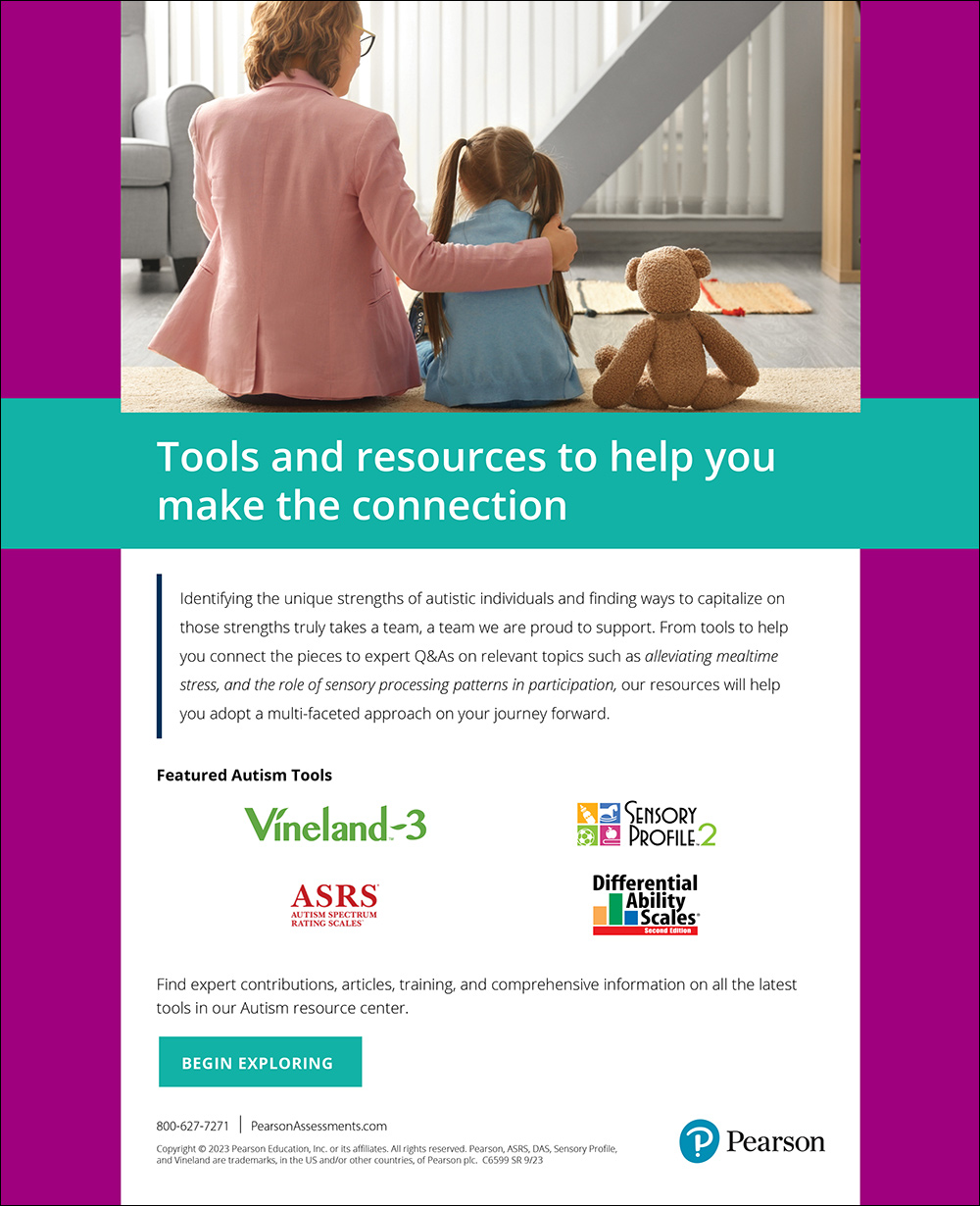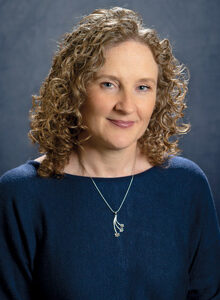As a registered occupational therapist (OTR) and Director of Portfolio Management and Delivery at Pearson Clinical Assessment, I have extensive experience working with students who have been diagnosed with a variety of conditions. And as a mom of an autistic daughter, I understand on a personal level how challenging it can be to get the diagnosis that’s needed – and why it’s imperative that schools join caregivers in their quest for answers.

Advocating for Your Child – The Long Journey When Doors Are Shut
My daughter, who is now 20, was diagnosed with autism at the age of five. While that might seem relatively early – and it definitely is compared with many – I knew from the time she was two that it was a possibility. That instinctual notion set off an arduous journey of speaking with professionals who would suggest she had speech and language needs rather than autism.
It’s hard to endure that frustration as a parent: when you are certain your child needs something, and practitioners and other experts push back. But, I remained persistent and eventually got her the specialist care that has helped her flourish and which she still needs today to manage her everyday life.
However, not everyone has the capacity to continue when they feel as though they aren’t being heard, and I realize my professional background gave me an advantage. If I hadn’t known what to look for and hadn’t pushed, she probably wouldn’t have been diagnosed until much later, delaying the start of critical support and therapy she needed.
As a parent, we know to trust our instincts because we know our child. It’s our role to advocate for them to ensure access to the right supports as early as possible, which will contribute to better long-term outcomes.
Yet, large gaps remain in getting children diagnosed with autism, especially those in specific demographic groups. It’s why I’m always eager to speak out.
The Role Educators Have in More Equitable Diagnoses
One of the issues I discovered was that there are multiple barriers to getting a diagnosis in females. These include parental perception, but also lack of information and even clinical bias, where many in the field continue to view autism as a “boy’s disorder.” Additionally, with less readily available information regarding females and autism, it’s more difficult for concerned parents to find out what they need to know.
Taken together, all these factors can lead to delays in recognizing autistic profiles, which, in turn, delays referrals. It’s no surprise that research indicates many girls with autism are not properly diagnosed.
Besides gender, race/ethnicity and socioeconomic factors can contribute to under-diagnoses in certain groups. A recent study from Rutgers University concentrated in the New York / New Jersey metro area discovered that Black children with Autism Spectrum Disorder (ASD) and no intellectual disabilities were 30% less likely to be identified compared with white children. Those living in affluent areas were 80% more likely to be identified with ASD and no intellectual disabilities compared with children in underserved areas. Additional research from the CDC finds that Black and Hispanic children are less likely to be identified with ASD than white children, although that number has recently risen. Further recent research finds underserved populations also often lack access to needed resources.
These disparities in private diagnosis illuminate the critical role schools play. Screening is the first step in the early intervention and identification process, which is vital to begin implementing supports and therapy to facilitate success. Early detection is key in terms of improving both academic outcomes and social needs. Students who are diagnosed later might not thrive to the extent possible, which in turn can impact mental health, social skills, and more.
Early detection also helps families better understand their child’s needs and advocate for them, as schools can act as a gateway to the resources and services caregivers need but might otherwise be unable to access or afford.
Autism screening should be included as part of a comprehensive mental health approach, given how the two conditions are intertwined. Studies show around 70% of children and young people with autism experience one mental health condition, while 41% experience two or more mental health diagnoses.
Assessments and Supports That Can Help Promote Better Outcomes
While the benefits of screening for autism are clear, I know schools are constantly challenged to find funding for any programs, even those with clear benefits. That’s why I am proud of the wide array of tools in the Mental Health Resource Center that Pearson has assembled.
I also believe in the power of staff education and training. Working with autistic students can be challenging, but the more educators understand, the more support they can provide. A whole host of environmental and interpersonal factors can impact students’ participation level, but fortunately, there are ways educators can adjust their physical classroom setup and daily routine to accommodate a wide variety of needs.
Pearson provides a number of assessments that can identify students with autism and their needs, which can initiate the journey to provide the individual supports that will foster success:
- Vineland Adaptive Behavior Scales (VinelandTM-3) provides a standardized way to assess an individual’s social and practical skills to meet the demands of everyday living; it uses multi-faceted inputs from caregivers and teachers to triangulate those different perspectives.
- The PEDI-CAT can be used to support a key assessment goal of gaining understanding of the support needs required to participate in daily activities.
- Sensory ProfileTM 2 offers insight that can help educators make the right accommodations and help autistic students become masters of their own environment.
Focus on the Strengths
By working together, we can make sure the right processes are in place to facilitate screening and make sure it’s carried out effectively and efficiently.
The most essential support – as with any area of child development – is to embrace their strengths. Don’t spend your energy lamenting what an individual can’t do or won’t do. Focus on where they thrive – what they can do and what they choose to do.
That’s what will set the child up for success within the classroom environment as well as in all other facets of their life. “Focus on the positives” is my mantra, and it can be yours too.
Hughes recommends districts tap into the myriad of free tools Pearson provides. For more resources to support all of your students, check out Pearson’s Mental Health Resource Center.
Shelley Hughes, OTR, is Director of Portfolio Management and Delivery at Pearson Clinical Assessment. For more information, email. Shelley.hughes@pearson.com and visit Autism Tools | Pearson Clinical Assessments (pearsonassessments.com).







